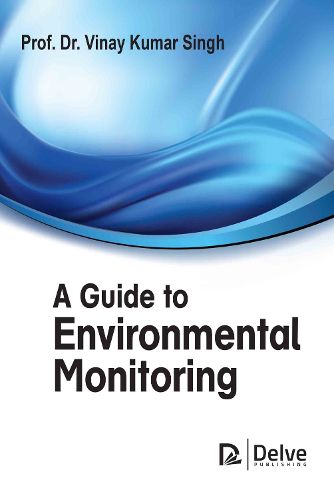Readings Newsletter
Become a Readings Member to make your shopping experience even easier.
Sign in or sign up for free!
You’re not far away from qualifying for FREE standard shipping within Australia
You’ve qualified for FREE standard shipping within Australia
The cart is loading…






Environmental monitoring can be described as the measured sampling of soil, air, water and biota to observe and review the environment, and to acquire data from this process. Monitoring can be performed for various purposes, including to form environmental "baselines, patterns, and overall impacts", to test ecological systems, to assess environmental modelling strategies, to test strategy plan and navigation, to guarantee consistence with natural guidelines, to review the impacts of anthropogenic impacts, or to perform natural resource inventories. A list of purposes for monitoring is introduced in this volume, and the list assists with highlighting the significance of observation and how its outcomes are ever-present in our regular lives. Environmental monitoring projects can vary altogether in the size of their spatial and temporal limits. For instance, a threatened fish in a small river and the suitability of its transient fate will need monitoring on short and regional temporal and spatial scales, whereas the management of natural systems that scale a country will require monitoring systems that are a lot more extensive in scale. Monitoring systems can vary fundamentally in scope, varying from communal monitoring on a neighborhood scale, to enormous collaborative universal monitoring projects, for example, those focused on environmental change. An outline of spatial and temporal scale applicable to environmental monitoring is discussed in the volume.
$9.00 standard shipping within Australia
FREE standard shipping within Australia for orders over $100.00
Express & International shipping calculated at checkout
Environmental monitoring can be described as the measured sampling of soil, air, water and biota to observe and review the environment, and to acquire data from this process. Monitoring can be performed for various purposes, including to form environmental "baselines, patterns, and overall impacts", to test ecological systems, to assess environmental modelling strategies, to test strategy plan and navigation, to guarantee consistence with natural guidelines, to review the impacts of anthropogenic impacts, or to perform natural resource inventories. A list of purposes for monitoring is introduced in this volume, and the list assists with highlighting the significance of observation and how its outcomes are ever-present in our regular lives. Environmental monitoring projects can vary altogether in the size of their spatial and temporal limits. For instance, a threatened fish in a small river and the suitability of its transient fate will need monitoring on short and regional temporal and spatial scales, whereas the management of natural systems that scale a country will require monitoring systems that are a lot more extensive in scale. Monitoring systems can vary fundamentally in scope, varying from communal monitoring on a neighborhood scale, to enormous collaborative universal monitoring projects, for example, those focused on environmental change. An outline of spatial and temporal scale applicable to environmental monitoring is discussed in the volume.